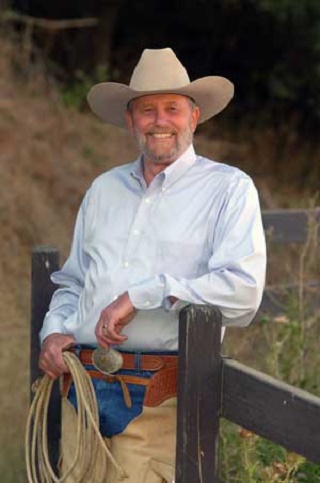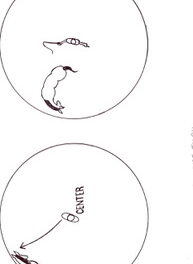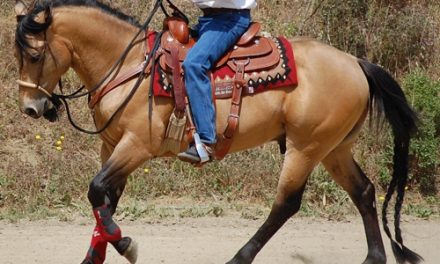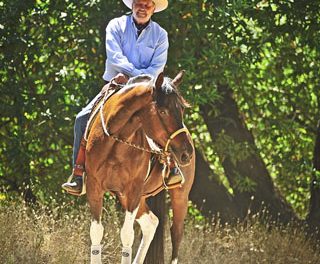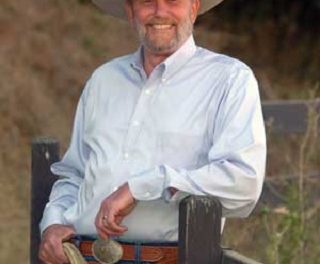 A clinician is an individual who works with a horse in front of an audience coaching and demonstrating training methods and techniques. A clinician must have several qualities and to me, the primary one is to be a good horseman. I should really say horse person as there are may women who do an outstanding job with horses. I believe that the key to being a good horseman is communication. Not only must a clinician communicate with the horse, but also with the audience or student.
A clinician is an individual who works with a horse in front of an audience coaching and demonstrating training methods and techniques. A clinician must have several qualities and to me, the primary one is to be a good horseman. I should really say horse person as there are may women who do an outstanding job with horses. I believe that the key to being a good horseman is communication. Not only must a clinician communicate with the horse, but also with the audience or student.
A true horseman is able to work with a horse and achieve a desired response and have the horse be more relaxed at the end of the session than when it started. There are other qualities to being a good horseman such as knowing and understanding care and nutrition but in terms of handling horses, sometimes known as horse wrangling, teaching, educating or training, the clinician must have excellent communication skills. Some people don’t like the word trainer as it implies only training the horse and not the rider. As I use the general term trainer here, it refers to educating both the horse and the audience.
There are three aspects of training a horse, the physical, mental and emotional. Any good horseman understands that. The gateway to the horse’s mind is through his emotions. When the emotions are too high, the mind cannot be reached and the horse cannot learn. Communication is the key that opens the door to learning. I’ve watched Stephen Peters teach at the ranch and he speaks clearly and everyone is able to understand him and understand what he is doing and why. At the same time, I have seen him get on a green horse that does not have much education and get that horse to perform in a manner that was very pleasing to the human eye also very comfortable for the horse. He demonstrated good communication skills with those watching and with the horse he was working. This is the goal of the clinician.
In every clinical situation, the horse always has the last word so to speak. The bottom line is that when the trainer is finished working the horse, the horse must be relaxed and calm. If the horse is tense, flighty and frightened, learning has not taken place. The horse may show some concern because he has just been worked and asked to do something new however, there is big difference between being concerned and being flighty and afraid.
A clinician must also be somewhat entertaining. I know from experience that if my presentation is all nuts and bolts, the audience gets bored and drifts off. After five and ten minutes worth of information, an anecdote or some humor must be interjected to draw the audience back in. Keeping the crowd engaged maybe one of the most difficult tasks for a clinician. No matter how good the information is, if the audience either can’t understand it or is bored, no learning takes place. So, while I am working with the horse, I must also be able to talk to the audience. I explain what I am doing and why, and comment on how the horse is doing. I have to know what the horse is doing and verbalize what is happening, all at the same time. This is not an easy thing to do but it is an important skill for a clinician.
When I have a horse that I will be working in a clinic setting, I have to decide very quickly how to proceed. I may not be able to use the method I prefer with a given horse. Not all horses follow the script, or in other words, respond to the same training method. A clinician must be flexible and be able to use more than one method or tool to accomplish the exercise or goal. If the preferred method doesn’t work on a horse, the clinician will be stumped unless he or she can alter the game plan. A horseman/clinician has to be able to think on his feet and do what it takes to communicate with the horse.
A clinician has to get the job done for the sake of the horse. It can’t be only about showmanship, it is always about the horse. I have done demonstrations where the horse made me look really good. The horse had a good mind and was relatively compliant. The horse may have had a high emotional level and been flighty but I worked through it and the horse got really relaxed. The horse followed me around or if under saddle, moved off my leg immediately. The horse understood the lesson and wanted to please. But that scenario doesn’t happen with every horse. Sometimes, for the sake of the horse, I have to make a decision with the best interest of the horse in mind, and make the choice not to tackle a certain issue at that time.
A lot of horses are more than salvageable if the right kind of training is used. Sometimes we need to think outside the box and expand our methods. We may need to do exercises in a different way. When I work with dressage horses, I use a lot of reining exercises because they seem to work. Even our western horses are trained using dressage principles. We use our equipment sparingly. We use it to train the horse but the equipment is the last tool we use whether working on the ground or in the saddle. We focus on communication, becoming the leader in the relationship, and gaining the trust of the horse. We are communicating our wishes and following up with the equipment to get the desired result. Only using enough pressure to get the desired behavior and then immediately releasing.
To review, a clinician is an experienced horseman, one that never stops learning. Every time I work with a new horse, that horse teaches me something. And, having worked with many horses over the years, I am able to call upon those experiences to help me work with horses that are difficult or do not respond to traditional methods. A good clinician always puts the welfare of the horse first. A clinician must be a good communicator, both with the horse and with the audience. He or she must be a bit of a showman and be able to stand before an audience and keep them engaged. He or she must be humble and willing to say, “this isn’t working” if the horse will not cooperate. All this must be done while the horse is being worked. And finally, the horse always has the last word on whether or not the clinician has been successful.
Charles Wilhelm

